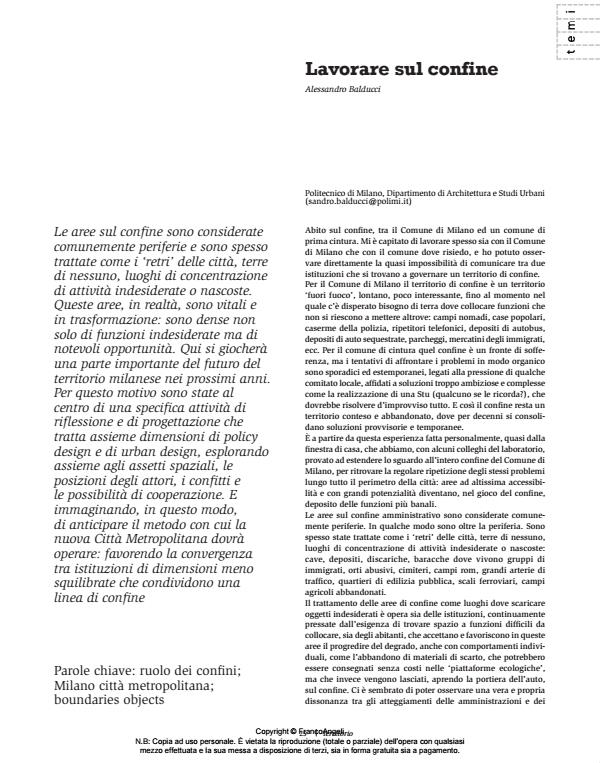Lavorare sul confine
Titolo Rivista TERRITORIO
Autori/Curatori Alessandro Balducci
Anno di pubblicazione 2014 Fascicolo 2013/67
Lingua Italiano Numero pagine 2 P. 25-26 Dimensione file 651 KB
DOI 10.3280/TR2013-067003
Il DOI è il codice a barre della proprietà intellettuale: per saperne di più
clicca qui
Qui sotto puoi vedere in anteprima la prima pagina di questo articolo.
Se questo articolo ti interessa, lo puoi acquistare (e scaricare in formato pdf) seguendo le facili indicazioni per acquistare il download credit. Acquista Download Credits per scaricare questo Articolo in formato PDF

FrancoAngeli è membro della Publishers International Linking Association, Inc (PILA)associazione indipendente e non profit per facilitare (attraverso i servizi tecnologici implementati da CrossRef.org) l’accesso degli studiosi ai contenuti digitali nelle pubblicazioni professionali e scientifiche
Areas on the border are commonly considered peripheral areas and are often treated as the ‘backends’ of cities, no man’s lands, places where undesirable or hidden activities are concentrated. In reality these areas are vital and they are changing. They are filled not only with undesirable activities, but also with considerable opportunities. An important part of the future of the Milan area will be played out here in the next few years. That is why they were the centre point of specific study and design which brought together the dimensions of both policy and urban design and explored spatial aspects together with the stances of the actors, the conflicts and the possibilities for co-operation. And by imagining, in this manner, how to anticipate the method by which the new metropolitan city will have to operate, the study favoured convergence between institutions of a less disproportionate size which share borders.
Parole chiave:The role of borders; Milan metropolitan city; boundaries objects
Alessandro Balducci, Lavorare sul confine in "TERRITORIO" 67/2013, pp 25-26, DOI: 10.3280/TR2013-067003